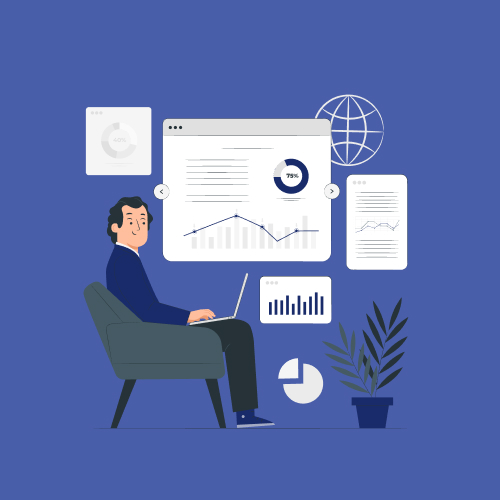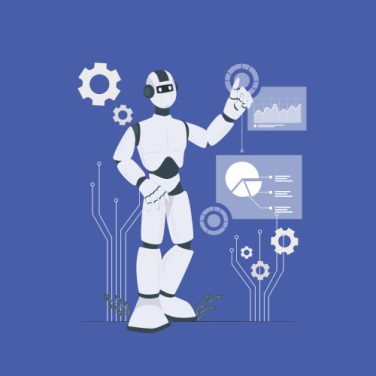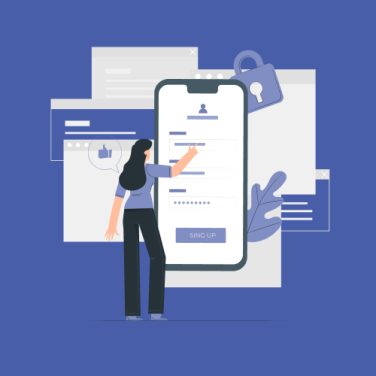HR reporting consolidates workforce data from multiple systems into structured, easy-to-consume reports and is the end result of HR analytics, enabling stakeholders to monitor key human capital metrics such as headcount, turnover, and compliance.
What is HR analytics?
HR analytics is the practice of collecting, analysing, and interpreting people data to uncover patterns and drive strategic decision-making. It supports informed business decisions by revealing workforce trends in areas like recruitment, performance, engagement, and retention.
Automation streamlines traditional workflows by:
- Automating data collection from HRIS, payroll, and time-tracking systems
- Generating standardised reports and dashboards on a defined schedule
- Refreshing live analytics in real time without manual intervention
Unlike static, point-in-time reports, automated HR reporting and analytics workflows provide continuous visibility into workforce metrics. This shift enables HR teams to move from retrospective analysis to proactive, data-driven workforce planning and risk mitigation.
Why HR reporting and analytics automation matters
Traditional HR reporting often relies on manual data extraction, spreadsheet consolidation, and ad-hoc chart updates. Automating these processes matters because it:
- Eliminates manual data gathering to reduce errors and free up HR capacity. Automation can significantly reduce human error by eliminating manual data entry.
- Accelerates report delivery from weeks to minutes, empowering timely workforce decisions.
- Ensures data accuracy and consistency across HR systems, maintaining a single source of truth.
- Delivers ROI through cost savings, improved compliance, and strategic workforce agility. Automated HR solutions generate measurable business impact.
With MiHCM’s HR analytics, organisations transform raw data into actionable insights. The data-driven HR decisions feature further enable leaders to:
- Visualise real-time headcount and turnover trends
- Monitor recruitment funnel performance
- Align workforce plans with business objectives
- These capabilities help HR managers make faster, data-driven decisions, reduce manual reporting errors, and improve strategic planning through predictive analytics—ultimately boosting operational efficiency and workforce agility.
Core HR reporting and analytics metrics you should track
| Metric | Description | Why It Matters |
|---|---|---|
| Time to Hire & Time to Fill | Measures days from job requisition to candidate acceptance. | Indicates recruitment efficiency and candidate experience. |
| Turnover & Retention Rate | Percentage of employees leaving vs. staying within a period. | Tracks workforce stability and flags at-risk groups. |
| Absenteeism Rate & Overtime Hours | Average unplanned absence days and extra hours worked. | Highlights capacity challenges and well-being issues. |
| Cost per Hire & Recruitment Funnel Conversion | Total hiring costs divided by hires; conversion across sourcing, screening, interviewing. | Assesses cost-effectiveness of recruitment strategies. |
| Employee Net Promoter Score (eNPS) & Engagement | Score based on likelihood to recommend; survey-based engagement metrics. | Gauges satisfaction and cultural alignment. |
| Revenue per Employee & Training ROI | Revenue divided by headcount; value generated vs. training investment. | Links HR programs to business performance. |
| Diversity & Inclusion Metrics | Representation across gender, tenure, and role levels. | Drives equitable talent strategies and compliance. |
Tracking these HR reporting metrics enables stakeholders to benchmark performance, identify improvement areas, and align people programs with organisational goals. Automated dashboards make it easy to monitor trends and drill into the root causes of workforce movement.
Integrating HR reporting and analytics for 360° workforce insights
Key data sources
- HRIS: Core employee records, organisation structure, job history.
- Payroll: Compensation, tax, benefits data.
- Time & Attendance: Hours worked, leave balances, shift patterns.
- Performance Management: Reviews, ratings, goal tracking.
Architecture of an integrated analytics platform

An effective platform centralises data through ETL pipelines or native connectors. Real-time dashboards pull data directly from MiHCM’s HRIS and payroll modules, ensuring live updates as changes occur. Data-driven HR Decisions are enabled by:
- Automated data ingestion and transformation
- Data warehouse storage for historical analytics
- Unified semantic layer for consistent metric definitions
- Self-service reporting with drill-down and ad-hoc querying
This architecture maintains a single source of truth, boosts transparency, and empowers managers to explore workforce analytics without IT support, yielding faster, more accountable decision-making.
Implementing HR reporting automation: Key steps
Step 1: Requirements gathering
- Engage stakeholders (HR, finance, IT, compliance) to define objectives.
- Catalogue desired reports, dashboards, and predictive models.
- Document data sources, frequency, and security requirements.
Step 2: Tool selection and integration
- Evaluate HRIS modules, BI platforms, and automation engines.
- Assess MiHCM Data & AI for seamless HRIS integration.
- Plan ETL connectors or APIs to ingest payroll, attendance, and performance data.
Step 3: Change management and training
- Pilot dashboards with a small user group and collect feedback.
- Deliver training sessions on analytics workflows and self-service reporting.
- Develop documentation and establish support channels.
- Implement governance, security, and compliance protocols (e.g., GDPR, SOC 2).
By following a phased rollout—pilot, refine, enterprise scale—organisations can maximise adoption, ensure data quality, and embed automated HR reporting into everyday decision processes.
Interpreting HR reporting and analytics results to drive action
From dashboard to decision
- Analyse trend lines and variance analyses to identify emerging issues.
- Use correlation and segmentation (e.g., by department, tenure) to uncover root causes of turnover or absenteeism.
- Leverage predictive models to forecast staffing needs and potential attrition
- Prioritise insights by business impact and feasibility of interventions.
Building actionable reports
- Embed Predict Workforce Performance models in executive summaries to project headcount and skills gaps.
- Use Turnover Management features to flag high-risk groups and recommend retention strategies.
- Integrate insights into talent reviews, budget planning, and L&D program design.
- Set up alert thresholds and automated notifications for metrics drifting beyond defined limits.
Actionable reports transform raw analytics into clear recommendations, enabling HR teams to proactively address risks, optimise workforce strategies, and measure the impact of interventions over time.
Tools and platforms for HR reporting automation

- Built-in HRIS Analytics: Leverage MiHCM Data & AI and Analytics modules for end-to-end reporting directly within the HRIS.
- Business Intelligence Tools: Integrate for advanced visualisations and custom dashboards.
- Automation Engines: Orchestrate data workflows, automate report generation, and schedule distribution.
- Embedded AI Assistants: Employ for natural language queries on HR data, enabling non-technical users to ask questions and get instant insights.
- Cloud Data Warehouses: Centralise data to support scalable analytics and historical trend analysis.
These tools work together to form a comprehensive HR reporting and analytics ecosystem. MiHCM’s Analytics capabilities ensure seamless integration, automated data pipelines, and customisable dashboards—accelerating time to insight and boosting confidence in workforce decisions.
Real-time dashboards vs static reports: Best practices
| Aspect | Real-time Dashboards | Static Reports |
|---|---|---|
| Update Frequency | Continuously refreshes as data changes | Point-in-time snapshot (daily, weekly, monthly) |
| Ideal Use Cases | Operational monitoring, early warning alerts | Compliance submissions, board presentations |
| Strengths | Instant visibility, interactive exploration | Simplicity, printable/exportable format |
| Limitations | Can overwhelm with data if poorly designed | May be outdated by publication time |
| Audit & Version Control | Built-in history and access logs | Manual version management required |
For daily operations, real-time dashboards deliver proactive insights and allow users to drill into issues as they arise. Static reports provide concise executive summaries and meet regulatory requirements. Best practice is to schedule continuous dashboards for operational teams while automating periodic exports for compliance and leadership overview.
Ensure both formats have clear version control, audit trails, and consistent metric definitions to maintain trust and transparency.
Combining reporting with predictive analytics
Building predictive models in HRIS:
Organisations can enhance descriptive HR reports with predictive analytics to anticipate workforce trends:
- Train models on historical data: tenure, performance ratings, engagement scores, and demographic attributes.
- Develop attrition risk scores and hiring velocity forecasts to inform talent strategies.
- Visualise forecasts alongside actuals to validate accuracy and recalibrate model parameters.
- Run “what-if” scenario analyses for headcount changes, budget impacts, or policy adjustments.
- Continuously retrain models with new data to maintain predictive precision.
By integrating predictive outputs into dashboards, HR teams gain foresight on staffing needs, potential skills gaps, and retention challenges—empowering proactive decisions rather than reactive firefighting.
Best practices and common pitfalls to avoid:
- Ensure data quality: Clean, standardised, and complete data feeds are critical to reliable analytics.
- Focus on high-impact KPIs: Limit dashboards to a few strategic metrics to prevent information overload.
- Maintain governance & compliance: Implement role-based access, encryption, and audit logging at every stage.
- Drive user adoption: Provide training, documentation, and ongoing support to encourage consistent usage.
- Avoid siloed analytics: Centralise insights in a unified platform to enable cross-functional collaboration.
- Monitor performance: Track tool usage, report accuracy, and business outcomes to measure ROI and guide enhancements.
By following these best practices and being mindful of common pitfalls, organisations can build a sustainable HR reporting and analytics capability that delivers lasting value.
Next steps
HR reporting and analytics automation transforms laborious, error-prone processes into streamlined, strategic workflows. By consolidating data, generating real-time dashboards, and embedding predictive models, organisations can transition from retrospective reviews to proactive workforce planning.
- Begin with a small pilot to validate requirements and build momentum.
- Scale across the enterprise while continuously refining data governance, training, and user experience.
- Leverage MiHCM’s end-to-end solution for immediate ROI: integrate HRIS, analytics, and predictive capabilities in one platform.
Ready to see automation in action? Schedule a demo today and explore how intelligent HR reporting and analytics can drive your workforce strategy forward.
Frequently Asked Questions
What is HR reporting automation?
Why is HR reporting automation important?
What metrics should be included in HR reports?
How do you integrate HR reporting and analytics?
What data sources power HR analytics?
What are the key steps to implement HR analytics?
How do you interpret HR analytics results?
What tools support HR reporting automation?
Options include MiHCM Data & AI, Analytics modules, BI tools, and cloud warehouses.



